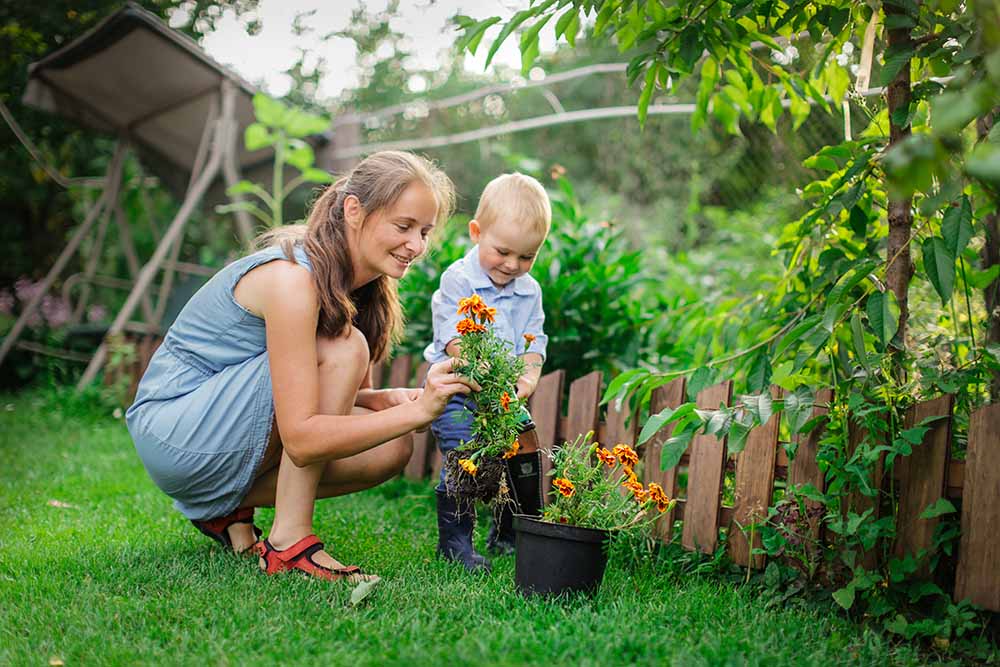
Are you someone who loves the idea of having their own garden, but is convinced that they don’t have the ‘green thumb’ to pull it off? Don’t worry, you aren’t alone. While some people seem to have a knack for growing and maintaining beautiful gardens, there are many more people that struggle. However, with the right tips, you too can have an enviable garden.
Ready to get started with gardening? Here are some essential do’s and don’ts.
Fertilizing Planting Caring
Fertilizing
Keeping your garden lush and healthy is an important part of care and maintenance, and one of the best ways to do this is by fertilizing your outdoor space. This includes the garden and surrounding lawn to ensure everything stays healthy as possible. Yet fertilizing your garden isn’t as simple as grabbing some nutrient-rich topsoil and spreading it around - here’s what to do, and what to avoid, when it comes to fertilizing your garden.
Do
· Get a soil test done. You can do at home testing kits which will help you determine the best fertilization methods for your garden (and lawn).
· Consider aerating your lawn. This will help make sure that the plants in your outdoor space have better access to air, water, and fertilizer.
· Put more fertilizer on plants that spend time in direct sunshine rather than those in the shade.
· Choose a slow-release fertilizer.
Don’t
· Use fertilizer mixed with bug or weed kill.
· Pick a random bag of soil off the shelf or buy based on price. Read the label or, if you’re unsure what to look for, ask at a garden centre.
· Fertilize randomly during the season. It’s best to fertilize your lawn at the end of summer or early fall, but for plants and trees it’s not advised to fertilize that late. You are better to fertilize your garden in the spring.
Planting
Next up is planting, which obviously needs some thought put into it. After all, just because you love mangos and coconuts doesn’t mean that your Ontario garden is a good place to try to plant and grow them. Here are some key do’s and don’ts for planting.
Do
· Choose plants and/or vegetables suited for your location, soil type, and the amount of sunshine your garden gets. Different plants have different needs to thrive.
· Pay attention to the depth when planting seeds. The packaging should have instructions. Don’t assume that every plant is the same.
· Start small, especially if you are a beginner. Gardens require a lot of maintenance and you don’t want to get overwhelmed.
· Plant at the right time of year. We assume that spring is the best time for planting but some flowers, for example tulip bulbs, are actually meant to be planted in the fall.
Don’t
· Overcrowd your plants. Give them space to grow. Also, note that you are more likely to have an invasion of pests if the plants are too close together.
· Work the soil when it is wet. This can damage it. Wait for a dry day to do your planting.
Caring
While creating your garden and planting may seem like the hard part, the truth is that it’s the plant care and maintenance that can really make or break your garden. Some plants are more hardy than others, but even then, there are right and wrong ways to do things. Here are some final do’s and don’ts for caring for your garden.
Do
· Water properly. Different plants may have different needs so, again, read the labels and do your research. The best time to water is early morning before the sun comes up, or in the evening when the sun has gone down. Also, be mindful not to overwater the plants or you can create problems with the roots. Try a soaker hose and use a timer for more consistency.
· Thin your plants as needed. If you find that your plants are getting crowded and growing too closely together, then it’s time for some maintenance.
Don’t
· Walk on your soil bed if it can be avoided. It compacts it too much and then makes it much harder for your plants to grow.
· Overwork your soil. It should be coarse with lots of particles in various sizes. There is no need for it to be fine and consistent.
· Ignore signs of disease or pests. Treat plants showing problems right away before the issue spreads.
Creating a garden can be a lot of work, but many find it to be an enjoyable hobby with beautiful results. If this is something you want to get into, then do your research, visit some flower centres or plant nurseries for advice, and above all, be patient.
Hannah Logan is a Canadian travel writer who dreams of being just like Indiana Jones. You can follow her travels on her personal travel blog
Eat Sleep Breathe Travel where she shares her travel tales and (mis)adventures around the world.